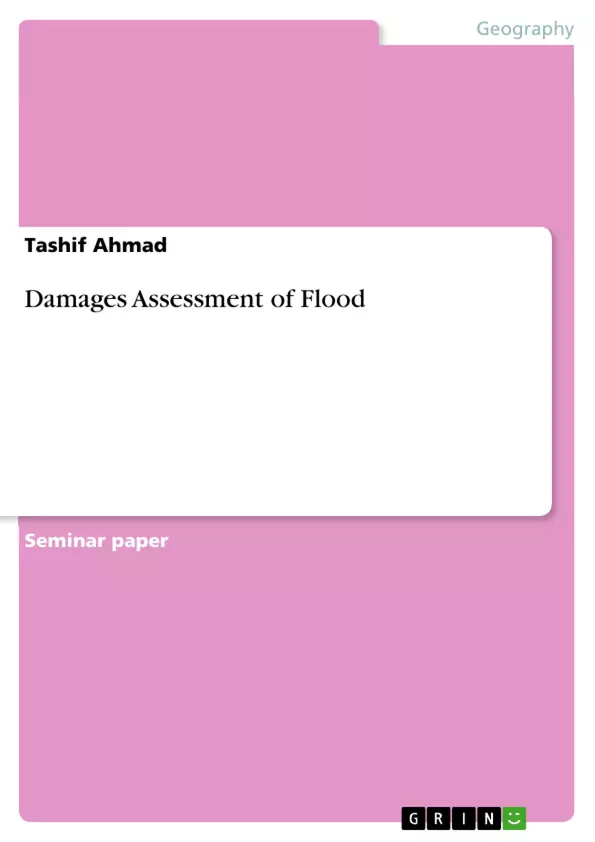Flood damage assessment is the estimation of possible damages which occurred due to the floods of 2010 and 2013. In this study some variable are selected to find out total damages. On the basis of those variables damages can be calculated.
The significance of the research is to calculate the damages in District Chiniot due to the floods in past. The local government will use it as basic information to make policies and implement to overcome the damages of flood. The local government will be able to decrease the damages of flood. The research will also help to aware the people about the loss of the agriculture crops and livestock.
Table of Contents
- Abstract
- Introduction
- Problem Statement
- Objectives
- Study Area
- Soil
- Rainfall
- Vegetation cover and trees
- Map of District Chiniot
Objectives and Key Themes
This research aims to assess the damages caused by the 2010 and 2013 floods in District Chiniot, Pakistan. The study focuses on quantifying the extent of these damages, which can be utilized by local authorities to develop strategies for flood mitigation and prevention.
- Analysis of flood damages in affected villages
- Determination of total damage caused by flood
- Identification of factors contributing to flood vulnerability
- Assessment of the impact of floods on agricultural activities and livestock
- Exploration of potential mitigation measures to minimize future flood damages
Chapter Summaries
The abstract provides an overview of the research, highlighting its significance for local governance and community awareness regarding flood damages. The introduction defines various types of floods and their potential for destruction, emphasizing the need for damage assessment.
The problem statement outlines the specific challenges posed by floods in District Chiniot, particularly affecting rural communities dependent on agriculture and livestock. The objectives of the study are then clearly stated.
The study area section provides detailed information about the geographical location, demographics, and environmental characteristics of District Chiniot, highlighting its vulnerability to flooding.
The soil, rainfall, and vegetation cover sections present relevant environmental data for the district, contributing to the understanding of factors influencing flood dynamics.
The chapter on the map of District Chiniot showcases the spatial distribution of key features and infrastructure within the district, aiding in the visualization of flood-prone areas.
Keywords
Flood damage assessment, Chiniot District, Pakistan, environmental vulnerability, agricultural losses, livestock impact, flood mitigation, community awareness.
- Quote paper
- Tashif Ahmad (Author), 2014, Damages Assessment of Flood, Munich, GRIN Verlag, https://www.grin.com/document/278465



